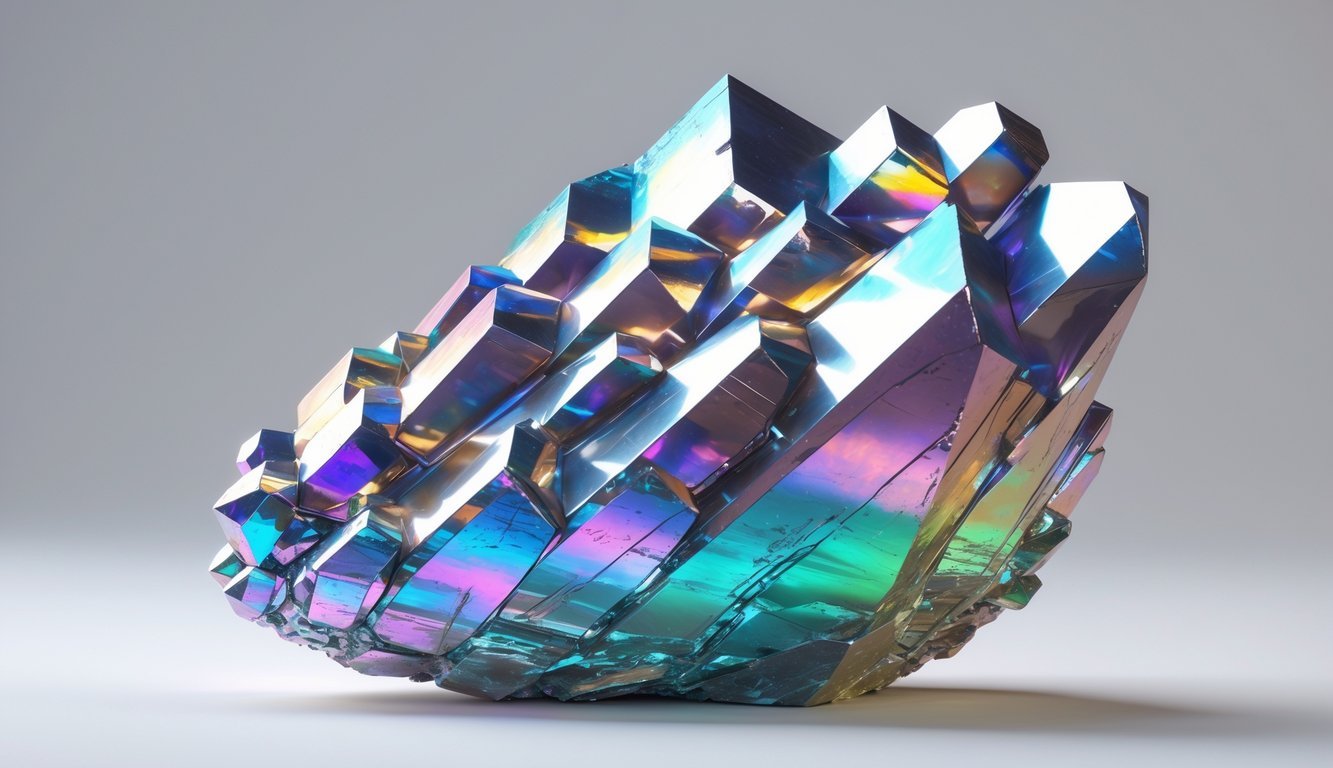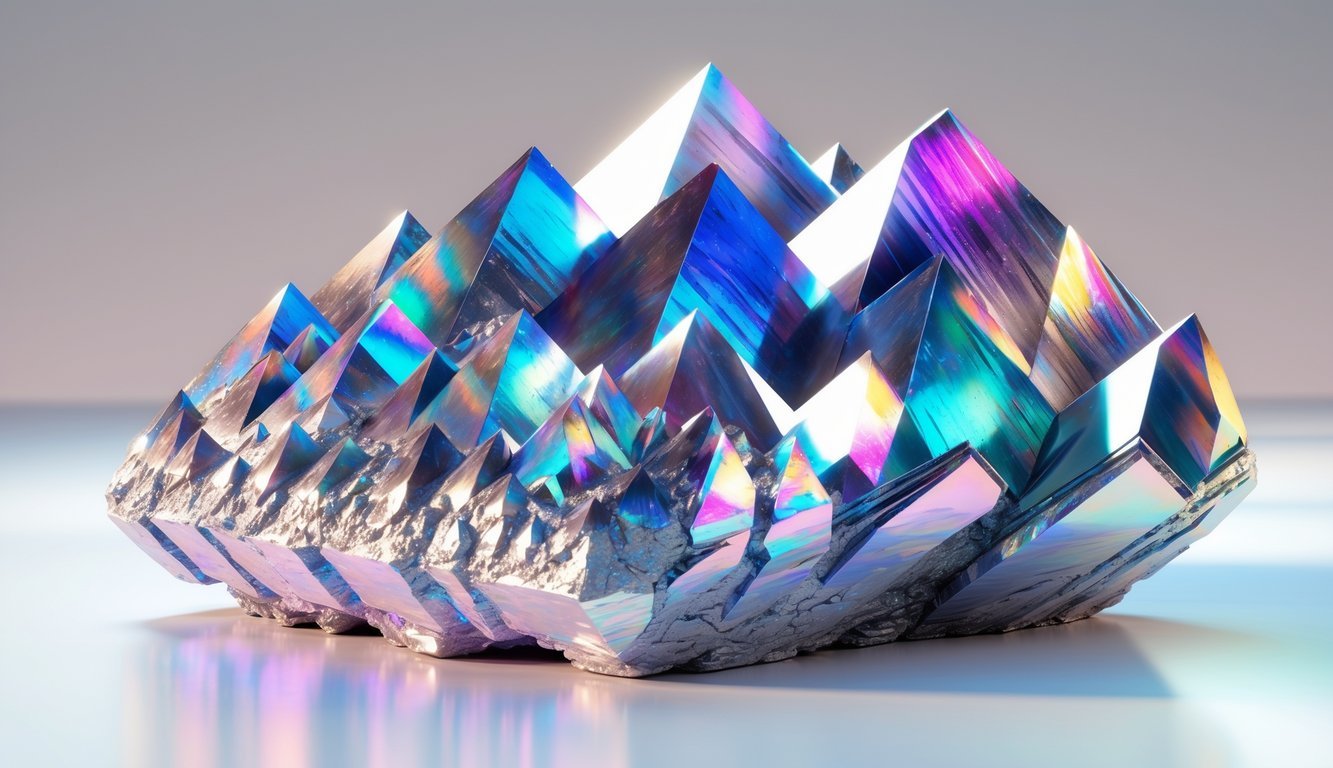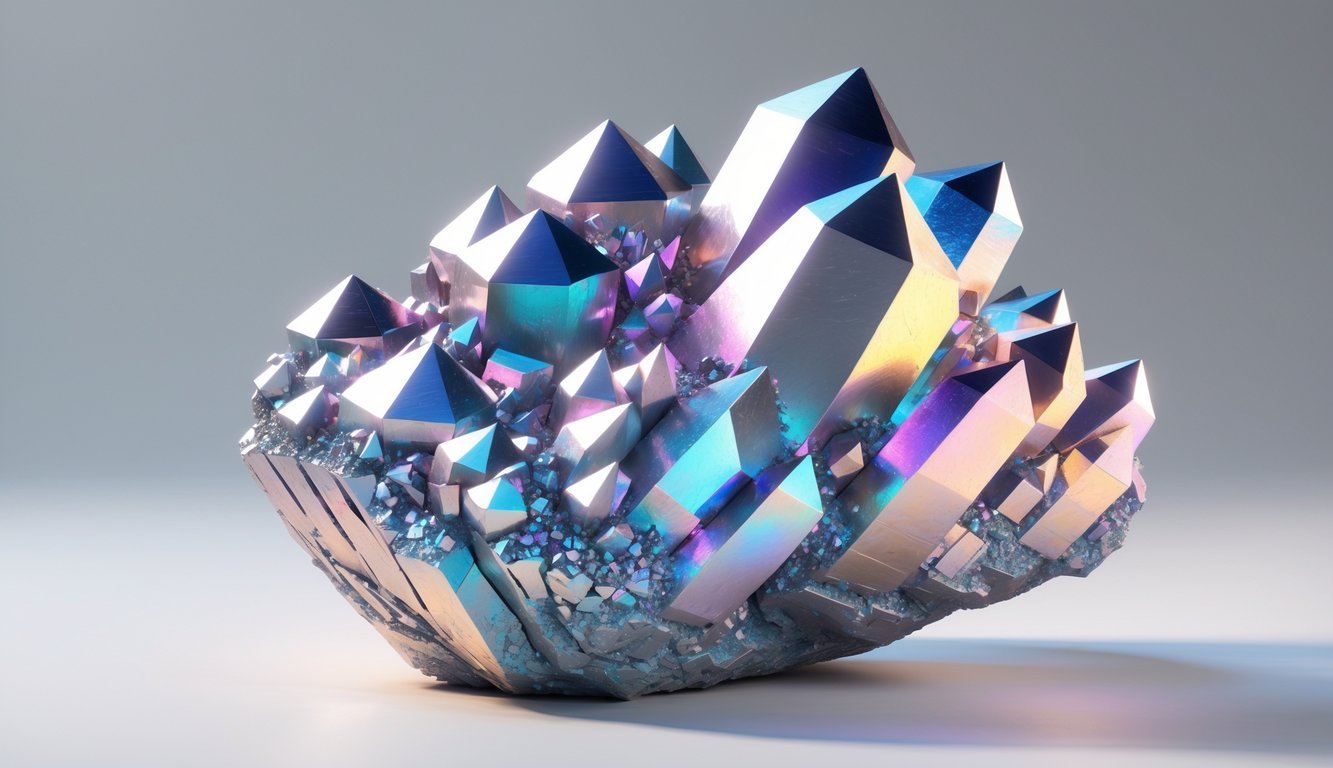PsychNewsDaily Publishers
100 Summit Drive
Burlington, MA, 01803
Telephone: (320) 349-2484
PsychNewsDaily Publishers
100 Summit Drive
Burlington, MA, 01803
Telephone: (320) 349-2484
Bismuth crystals are colorful metal formations created by melting bismuth, cooling it slowly, and allowing unique stair-step shapes to develop with vibrant rainbow hues.

Bismuth crystals are these stunning, colorful metal formations you can actually grow at home. When you melt bismuth and let it cool, it solidifies into these wild stair-step shapes with shiny, rainbow colors.
Their odd shapes and bright hues have made them a favorite among collectors and science fans.
You don’t need fancy gear or weird chemicals to make bismuth crystals. Just grab some bismuth metal and bring a bit of patience.
When you learn how these crystals grow, you start to appreciate the process—and the way bismuth acts, like how it expands as it cools. Growing bismuth crystals is a surprisingly easy way to dive into science and end up with something beautiful.

Bismuth crystals really stand out because of their shape, color, and the way they form. They come from the element bismuth, which sits at atomic number 83 on the periodic table.
These crystals shine with a metallic luster and have some pretty interesting uses.
Bismuth, with the symbol Bi, is a post-transition metal. It looks silvery-white in its plain form, but crystals of it are a whole different story.
Usually, bismuth crystals are brittle and feel pretty hard.
You create these crystals when pure bismuth cools down slowly. As it cools, the atoms line up in a way that makes those signature stair-step patterns.
Unlike other metals, bismuth crystals have a shape and shine all their own.
Bismuth crystals show off a bright, metallic luster—they might look silvery or white at first glance. But the real magic happens when a thin oxide layer forms on the surface as the metal meets air.
That’s what gives them those wild rainbow colors. You might spot pink, blue, green, or yellow, sometimes all on the same crystal.
They’re fragile, though, and can break if you’re not careful.
To make bismuth crystals, you melt pure bismuth and let it cool slowly. If you do this in a pot or on the stove, the metal starts to harden from the edges in.
The atoms tend to stick to the crystal’s edges instead of the flat faces. That’s why you get those “hopper” or stair-step shapes, with hollow gaps inside.
If there are tiny impurities, they’ll change how the crystal grows and looks.
You’ll find a few types of bismuth crystals. Some are pure, made just from bismuth metal. Others are from alloys with small amounts of other metals mixed in.
People use bismuth crystals in cosmetics like nail polish and eye shadow, thanks to their colors. They also show up in pharmaceuticals and pigments.
Some folks use bismuth crystals for healing and spiritual work, saying they help with focus or bring positive change. You can buy them online as decorative stones or meditation tools.
| Uses | Fields | Examples |
|---|---|---|
| Cosmetics | Beauty | Nail polish, eye shadow |
| Pharmaceuticals | Medicine | Pigments, pills |
| Decoration | Art, Gifts | Crystals, jewelry |
| Spiritual & Healing | Well-being | Meditation, focus tools |

Bismuth crystals do show up in nature, and they’ve had their moments in science and history. They’re also part of some modern uses you might not expect.
You’ll mostly find bismuth in minerals like bismuthinite, a sulfide ore. It often hangs out with other minerals, including antimony, lead, tin, nickel, cobalt, arsenic, mercury, and sulfur.
Pure bismuth is rare in nature, so most of it gets mined from these ores.
Countries like China, Bolivia, Mexico, Australia, Canada, Germany, and England mine bismuth. China’s way ahead of the pack in production.
Miners separate bismuth from these sulfides and oxides. Usually, the metal first appears as a white mass before anyone turns it into colorful crystals.
People knew about bismuth in ancient times, but they often mixed it up with lead or tin because it looked similar. The name comes from a Latinized German word—kind of a fun fact.
Bismuth stands out because it’s the most diamagnetic metal, which means it actually repels magnetic fields.
Scientists find bismuth interesting since it’s radioactive but way less toxic than other heavy metals, so it’s safer to handle. Its low thermal conductivity means it doesn’t move heat well, which made it useful for stove parts and other heat-resistant things.
Back in the day, people sometimes used bismuth to treat health issues like diarrhea. Its physical and chemical traits still matter in science today.
It’s kind of wild that you can grow bismuth crystals at home from molten metal. The way they solidify creates those geometric, colorful staircases.
Modern uses for bismuth include cosmetics, medicine, and low-toxicity alloys that replace lead. It even pops up in charging devices because of its properties.
Some folks in astrology and healing circles believe bismuth helps with astral travel or balancing energy, though there’s no science behind those claims.
You can find all kinds of bismuth products online, from crystals to jewelry. There’s something special about this metal—safe, pretty, and useful all at once.

Bismuth crystals grab attention with their shapes and colors. You can make them at home, learn about their uses, spot real ones, and figure out how to handle or buy them.
Heat up some bismuth metal until it melts. Then, let it cool slowly.
As it cools, crystals start to form on the surface.
Always watch out for hot metal and use safety gear like gloves and goggles.
People say bismuth crystals help with focus and creativity. The colors and patterns can feel calming or even inspiring.
There’s no strong scientific evidence, but lots of folks use them for decoration or meditation.
Size and color quality matter most for value. Sharp edges and unique shapes can bump up the price.
Crystals made from pure bismuth usually look better and might fetch more.
Almost all the bismuth crystals you’ll see are lab-made since natural ones are super rare.
Lab-grown crystals usually show rainbow colors and perfect geometric shapes. Natural bismuth looks more like dull, lumpy chunks.
Bismuth is a heavy metal, but it’s not very toxic.
Don’t eat it or breathe in dust from the crystals. Handling them with clean hands is fine.
If you melt bismuth, be extra careful with the heat and any fumes.
You’ll usually find bismuth crystals online at specialty crystal shops or science stores.
Sometimes, craft fairs or mineral shows have them, too. If you’re not sure about a seller, it’s smart to check their reviews first.